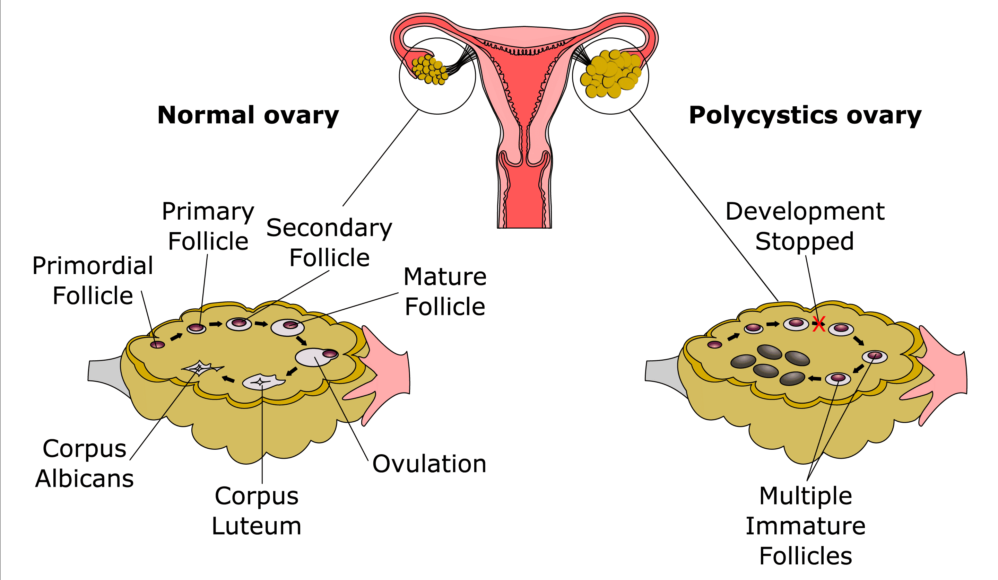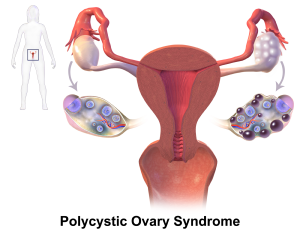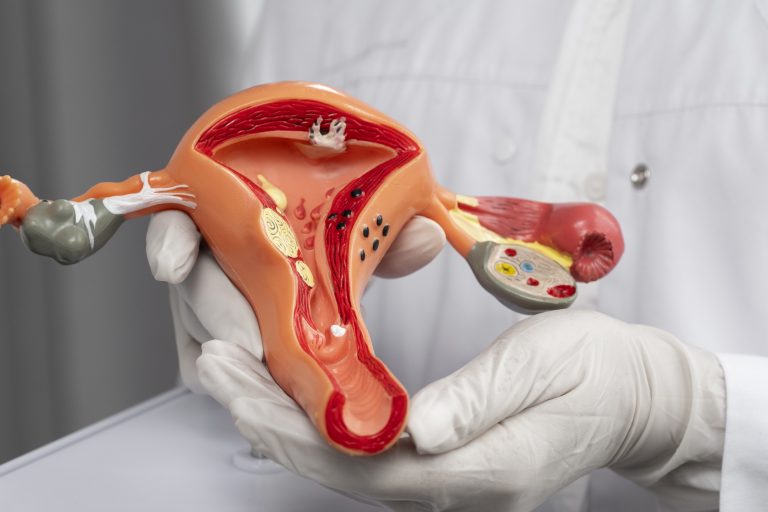Ovaries and Overlaps: The PCOS vs PCOD conundrum
- PCOD is more common and milder than PCOS
- PCOS is a chronic metabolic disorder requiring medical intervention
- Psychological well-being is a crucial part of managing PCOD and PCOS
My Story
As someone diagnosed with Polycystic Ovarian Disease (PCOD), my curiosity stemmed from apathy. For years, I navigated irregular periods that were often deemed “normal,” something many menstruating individuals are told in their pubescent years without much explanation. But earlier this year, when the irregularity persisted, I finally sought medical attention – an ultrasound revealed cysts in my ovaries, and I received a diagnosis of PCOD.
However, it was not until a friend asked, “Wait! So, do you have PCOD or PCOS?” that I realized how little I truly understood about what was happening in my own body. The question caught me off guard. Is it not the same thing?

We must first clarify that although Polycystic Ovarian Disease (PCOD) and Polycystic Ovarian Syndrome (PCOS) are often used interchangeably, they are not identical conditions. While both involve the formation of cysts in the ovaries and disrupt hormonal and reproductive health, they differ significantly in their severity and long-term health implications. Understanding their distinctions is essential to receive treatment and make informed decisions about one’s body.
Polycystic Ovarian Disease (PCOD)
According to UNICEF, PCOD is a relatively common condition affecting menstruating individuals during their reproductive years, with nearly one-third of menstruating women globally believed to be affected. In medical terms, during a healthy menstrual cycle, the ovaries release mature eggs each month for potential fertilization.
For individuals with PCOD, however, the ovaries often form immature or partially developed eggs. These eggs do not exit the body in the form of the usual monthly ovulation, leading to the formation of cysts and causing the ovaries to become enlarged and swollen. This subsequently results in higher levels of androgens, that is, male hormones like testosterone, which in turn lead to symptoms such as:
- Excessive Facial hair growth
- Male-pattern baldness
- Weight gain
- Irregular periods
One of the earliest signs is often an irregular menstrual cycle, which, in my case, prompted a visit to the gynecologist.
Despite its prevalence, PCOD has no definitive cure as it is a milder condition than PCOS and can often be managed through lifestyle modifications. These include a diet low in sugar and refined carbs, rich in protein and fiber, along with regular physical activity. As per UNICEF, these steps help reduce some of the weight gain, which is quite beneficial, as even a 5% decrease in weight significantly improves treatment.
These changes should always be undertaken with guidance from qualified health professionals.
In more symptomatic cases, treatment is targeted: acne and hair loss may be managed with dermatological solutions, while hormonal imbalances and fertility-related complications might require medication. With consistency, many individuals can reverse or significantly reduce PCOD symptoms.

Polycystic Ovary Syndrome (PCOS)
PCOS, on the other hand, is a more serious condition. In the late 1980s, ultrasound technology allowed doctors to visualize polycystic ovaries, contributing to the diagnosis. Historically, it was the Rotterdam Criteria (2003) that introduced a standardized diagnostic framework, requiring the presence of two out of three factors: signs of hyperandrogenism, irregular ovulation, and polycystic ovaries on ultrasound to diagnose PCOS.
PCOS thus refers to a collection of symptoms caused by multiple underdeveloped follicles in the ovaries and is classified as a chronic endocrine (hormonal) disorder. It is also considered a metabolic condition, with far-reaching effects across the body, including disruptions in insulin function and hormonal regulation, which is similar to PCOD but more acute. PCOS presents with a wider and more chronic range of symptoms, including:
- Sleep apnea
- Persistent pelvic discomfort
- Unexplained weight gain
- Irregular or absent periods
- Infertility, among others.
These symptoms can be subtle, misdiagnosed, or even go unnoticed for years, which is why regular gynecological checkups are essential.
Due to its complex nature, PCOS management is typically more intensive and may include medications, and fertility treatments. The goal is not to “cure” the condition, but to prevent long-term complications like type 2 diabetes, cardiovascular disease, endometrial cancer, increased risk of stroke, and cardiovascular disease.
Depending on symptoms, doctors may prescribe oral contraceptives (to regulate menstrual cycles), anti-androgens, and metformin (for insulin resistance). It is also important to note that, through evolving research, PCOS could exist without visible ovarian cysts, and not all women with cysts necessarily have PCOS.
Summary
PCOD (Polycystic Ovarian Disease) |
Hormonal imbalance causing ovarian dysfunction |
More common (affects 1 in 3 menstruating individuals) |
Milder and more manageable |
Irregular periods, weight gain, acne, hair thinning |
Lifestyle changes are often enough to reverse |
May affect fertility mildly |
Long-term risks are few if managed |
It can often be reversed or managed with lifestyle changes |
PCOS (Polycystic Ovary Syndrome) |
Endocrine-metabolic disorder affecting multiple systems |
Less common (affects 1 in 10 women globally) |
More severe and chronic |
Severe acne, insulin resistance |
Needs medical treatment + lifestyle intervention |
Higher risk of infertility and complications |
Higher risk of type 2 diabetes, heart disease, and endometrial cancer |
No complete cure, but symptoms can be managed |
Importance of Emotional and Mental Health
Both PCOD and PCOS can significantly impact emotional well-being, particularly due to visible and socially sensitive symptoms such as weight gain, acne, excess facial or body hair, and infertility.
These physical manifestations can often contribute to low self-esteem and body image issues, especially in cultural contexts where beauty and fertility are closely tied to identity. As a result, many individuals with these conditions experience stress, anxiety, and even clinical depression. Thus, there is a need to go beyond symptom management to acknowledge the emotional and social dimensions of these conditions.
Prioritising psychological well-being is essential for individuals navigating the complexities of PCOD and PCOS. Building strong support networks, seeking mental health care, and advocating for body-positive, stigma-free conversations are critical to ensuring patients feel seen, comfortable, and empowered in their own skin.
What's Next?
It is important to note that whether one chooses to trust allopathy, homeopathy, or an integrative approach, the key lies in understanding that both PCOD and PCOS involve prioritising your body and improving awareness of the realities.
It is also imperative, in an age of information overload, that misinformation about PCOD and PCOS is widespread; only proper medical tests and consultation with healthcare professionals can provide a clear and accurate diagnosis.
This article is the first step you take to make yourself more aware, a patient or not, and in the process, prioritise not only hormonal balance but also emotional well-being, leaning on therapy, and having well-informed conversations.
Pratisandhi does not endorse any specific medical treatment. Please consult your trusted healthcare provider for treatment!

Do PCOD and PCOS mean the same thing or are they different? Unicef India. (n.d.-b). https://www.unicef.org/india/stories/do-pcod-and-pcos-mean-same-thing-or-are-they-different
TOI Lifestyle Desk / etimes.in / Jul 10, 2025. (n.d.). PCOD or PCOS: Key differences, symptoms, causes, and prevention tips every woman should know: – times of India. The Times of India. https://timesofindia.indiatimes.com/life-style/health-fitness/health-news/pcod-or-pcos-key-differences-symptoms-causes-and-prevention-tips-every-woman-should-know/articleshow/122356604.cms
Myhealthopedia.com. (2025, April 26). PCOS and PCOD: Why they are different & what you need to know. Myhealthopedia. https://myhealthopedia.com/pcos-and-pcod-why-they-are-different-what-you-need-to-know/
PCOD vs PCOS: Difference, causes, symptoms, and treatments. Sprint Medical. (n.d.). https://sprintmedical.in/blog/pcod-vs-pcos-differences-causes-symptoms-effects-diagnosis-risks-treatments
Author

